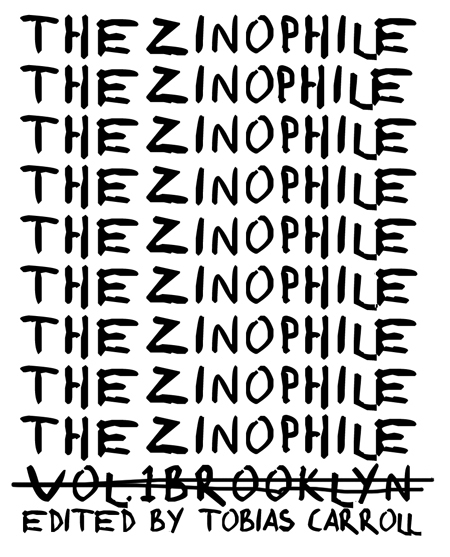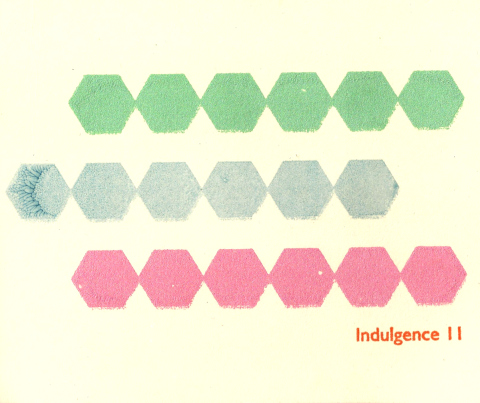
Talking about the tactile quality of zines is a given in this day and age, and I’d prefer not to be the person standing atop a soapbox extolling the virtues of physical media — if only because, if you’re reading this, you can probably recite those arguments by heart by now. I like print; I like digital; I like reading. I can talk for hours about the advantages of a particular media for a particular work — and I have. One particularly bizarre stretch of my life found me having dreams in which I had lengthy discussions about digital media with friends at a local bar — odd, given that in real life, I’m known to do the same thing.
There is something welcome about the way that this week’s zines sit in one’s hands, however. In one case, that comes from an ornate construction; in another, it’s due to nice repurposing of images that evoke late-1980s hockey games. Form and storytelling; structure and words.

The eleventh issue of Indulgence begins with the story of a band: Corita, an indiepop group that editor Eleanor C. Whitney played in for four years. It’s a capsule history of sorts, focusing on the group’s de facto origin, stemming from a meeting at an Oneida show at South Street Seaport. (Fun facts: I had a “wait, I was at that!” moment when reading that passage.) From there, it moves into thoughts on jobs and fulfillment — I haven’t yet read Whitney’s book Grow, but I’m guessing that there’s some thematic overlap here. It’s an enjoyable window into someone else’s life, from the creative outlets to workplace frustration.

Not long ago, I picked up a pair of chapbooks released by roots + limbs. The two contain work from Ariella Ruth’s Mountain Lost in the Palm, and the wordplay and imagery are quite evocative. What impressed me most, though, was the structure: each came with some sort of wrapper; shed that, and the experience of reading the chapbook becomes one of unfolding, of constantly reconfiguring your reading experience as pages change shape and the alignment of words alters itself to meet them.
Harrison Stewart’s zines have an equally defined aesthetic — though it borrows far more from primitive video games than anything else. The Coldest Winter of Our Hearts follows a lower-division hockey team in a small town in the middle of winter; here, figures are small blockish assemblages of polygons, given emotion by the landscapes and words around them. I also picked up Bull Terriers, a selection of images (and very brief vignettes) of exactly what you might expect.
On a very different note was the seventh issue of Sub Rosa, dedicated to editor Taryn Hipp‘s sobriety. Contained within is a terse explanation of how she decided to quit drinking — her family history, the town around her, and the incidents that led her to make this decision. (It looks as though Hipp will be revisiting some of this in an upcoming book — one which I’m very eager to read.) Her work here is plainspoken, honest, and ultimately very powerful; between this and her look at West Coast record stores, I’m looking forward to reading more from Hipp in the months to come.
Follow Vol. 1 Brooklyn on Twitter, Facebook, Google +, our Tumblr, and sign up for our mailing list.

1 comment
yay, so glad to see Taryn’s work get a positive mention here. she’s been a zine friend of mine for years 🙂